Ford Tourneo Connect vs Peugeot Partner – Which model is better for everyday use?
Two cars, one duel: Ford Tourneo Connect meets Peugeot Partner.
Which one wins in performance, efficiency and value for money? Find out now!
Costs and Efficiency:
Price and efficiency are key factors when choosing a car – and this is often where the real differences emerge.
Peugeot Partner has a noticeable advantage in terms of price – it starts at 22400 £, while the Ford Tourneo Connect costs 27300 £. That’s a price difference of around 4953 £.
Fuel consumption also shows a difference: Ford Tourneo Connect manages with 0.50 L and is therefore clearly more efficient than the Peugeot Partner with 5.20 L. The difference is about 4.70 L per 100 km.
As for range, the Peugeot Partner performs significantly better – achieving up to 354 km, about 235 km more than the Ford Tourneo Connect.
Engine and Performance:
Power, torque and acceleration say a lot about how a car feels on the road. This is where you see which model delivers more driving dynamics.
When it comes to engine power, the Ford Tourneo Connect has a hardly perceptible edge – offering 150 HP compared to 136 HP. That’s roughly 14 HP more horsepower.
In acceleration from 0 to 100 km/h, the Ford Tourneo Connect is somewhat quicker – completing the sprint in 10.10 s, while the Peugeot Partner takes 11.20 s. That’s about 1.10 s faster.
In terms of top speed, the Ford Tourneo Connect performs minimal better – reaching 186 km/h, while the Peugeot Partner tops out at 183 km/h. The difference is around 3 km/h.
There’s also a difference in torque: Ford Tourneo Connect pulls slightly stronger with 350 Nm compared to 300 Nm. That’s about 50 Nm difference.
Space and Everyday Use:
Whether family car or daily driver – which one offers more room, flexibility and comfort?
Both vehicles offer seating for 5 people.
In curb weight, Peugeot Partner is a bit lighter – 1329 kg compared to 1542 kg. The difference is around 213 kg.
In terms of boot space, the Peugeot Partner offers barely noticeable more room – 1800 L compared to 1720 L. That’s a difference of about 80 L.
In maximum load capacity, the Peugeot Partner performs distinct better – up to 4000 L, which is about 895 L more than the Ford Tourneo Connect.
When it comes to payload, Peugeot Partner a bit takes the win – 991 kg compared to 818 kg. That’s a difference of about 173 kg.
Who comes out on top?
Overall, the Ford Tourneo Connect shows itself to be dominates this comparison and secures the title of DriveDuel Champion.
It convinces with the more balanced overall package and proves to be the more versatile choice for everyday use.
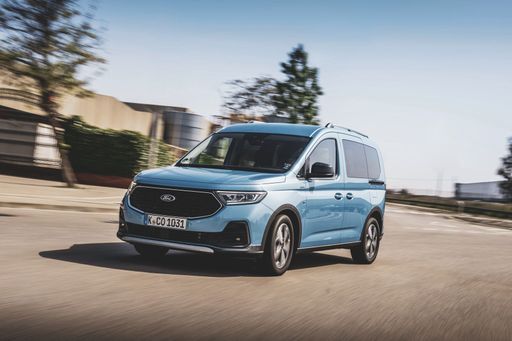 @ Ford Motor Company / Ford Media Center
@ Ford Motor Company / Ford Media Center
Ford Tourneo Connect
Ford Tourneo Connect
The Ford Tourneo Connect represents a versatile option in the people carrier segment, offering a blend of functionality and comfort for family or business use. Its design combines modern aesthetics with the practicality needed for daily operations, making it an appealing choice for those seeking a reliable and adaptable vehicle. Inside, the Tourneo Connect provides a spacious and well-thought-out interior, ensuring a comfortable driving experience for both driver and passengers.
details @ Ford Motor Company / Ford Media Center
@ Ford Motor Company / Ford Media Center
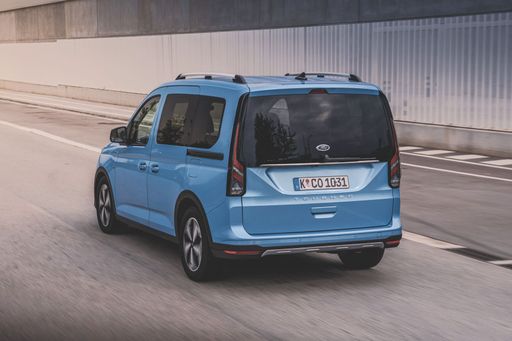 @ Ford Motor Company / Ford Media Center
@ Ford Motor Company / Ford Media Center
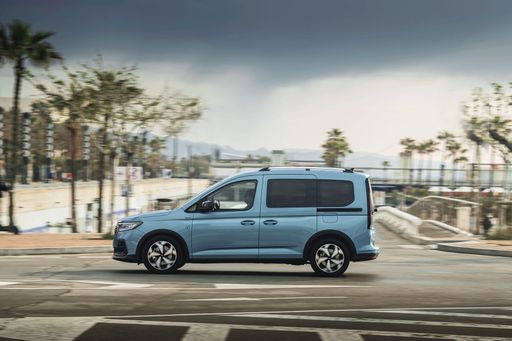 @ Ford Motor Company / Ford Media Center
@ Ford Motor Company / Ford Media Center
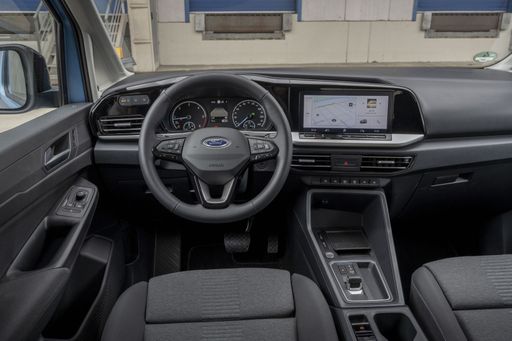 @ Ford Motor Company / Ford Media Center
@ Ford Motor Company / Ford Media Center
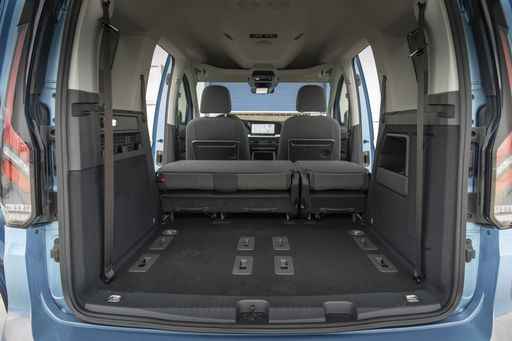 @ Ford Motor Company / Ford Media Center
@ Ford Motor Company / Ford Media Center
Peugeot Partner
The Peugeot Partner is a versatile and practical vehicle, ideal for both urban and rural settings. Its spacious interior and adaptable seating make it a popular choice for families and businesses alike. With a focus on reliability and efficiency, the Partner is well-suited to meet the demands of everyday transport.
details
 @ Ford Motor Company / Ford Media Center
@ Ford Motor Company / Ford Media Center
|
|
|
|
|
Costs and Consumption |
|
|---|---|
|
Price
27300 - 41900 £
|
Price
22400 - 33800 £
|
|
Consumption L/100km
0.5 - 6.9 L
|
Consumption L/100km
5.2 - 6.3 L
|
|
Consumption kWh/100km
-
|
Consumption kWh/100km
17.40 kWh
|
|
Electric Range
116 - 119 km
|
Electric Range
354 km
|
|
Battery Capacity
19.70 kWh
|
Battery Capacity
-
|
|
co2
11 - 164 g/km
|
co2
0 - 143 g/km
|
|
Fuel tank capacity
32 - 50 L
|
Fuel tank capacity
53 - 61 L
|
Dimensions and Body |
|
|---|---|
|
Body Type
High Roof Estate
|
Body Type
Cargo Van
|
|
Seats
5
|
Seats
2 - 5
|
|
Doors
5
|
Doors
4 - 5
|
|
Curb weight
1542 - 1781 kg
|
Curb weight
1329 - 1813 kg
|
|
Trunk capacity
1213 - 1720 L
|
Trunk capacity
1800 L
|
|
Length
4500 - 4868 mm
|
Length
4403 - 4753 mm
|
|
Width
1855 mm
|
Width
1848 mm
|
|
Height
1833 mm
|
Height
1796 - 1812 mm
|
|
Max trunk capacity
2556 - 3105 L
|
Max trunk capacity
3300 - 4000 L
|
|
Payload
563 - 818 kg
|
Payload
611 - 991 kg
|
Engine and Performance |
|
|---|---|
|
Engine Type
Plugin Hybrid, Petrol, Diesel
|
Engine Type
Electric, Diesel, Petrol
|
|
Transmission
Automatic, Manuel
|
Transmission
Automatic, Manuel
|
|
Transmission Detail
Dual-Clutch Automatic, Manual Gearbox
|
Transmission Detail
Reduction Gearbox, Manual Gearbox, Automatic Gearbox
|
|
Drive Type
Front-Wheel Drive, All-Wheel Drive
|
Drive Type
Front-Wheel Drive
|
|
Power HP
102 - 150 HP
|
Power HP
102 - 136 HP
|
|
Acceleration 0-100km/h
10.1 - 13.5 s
|
Acceleration 0-100km/h
11.20 s
|
|
Max Speed
175 - 186 km/h
|
Max Speed
135 - 183 km/h
|
|
Torque
220 - 350 Nm
|
Torque
205 - 300 Nm
|
|
Number of Cylinders
4
|
Number of Cylinders
3 - 4
|
|
Power kW
75 - 110 kW
|
Power kW
75 - 100 kW
|
|
Engine capacity
1498 - 1968 cm3
|
Engine capacity
1199 - 1499 cm3
|
General |
|
|---|---|
|
Model Year
2024 - 2025
|
Model Year
2024 - 2025
|
|
CO2 Efficiency Class
B, E, F
|
CO2 Efficiency Class
A, E
|
|
Brand
Ford
|
Brand
Peugeot
|
Is the Ford Tourneo Connect offered with different drivetrains?
Available configurations include Front-Wheel Drive or All-Wheel Drive.
The prices and data displayed are estimates based on German list prices and may vary by country. This information is not legally binding.
